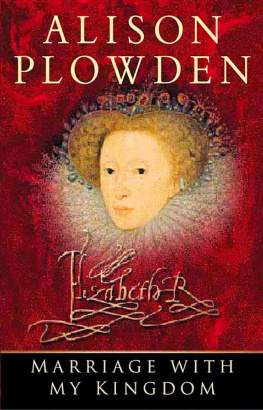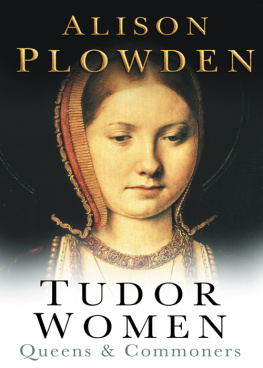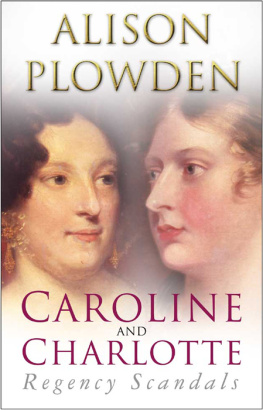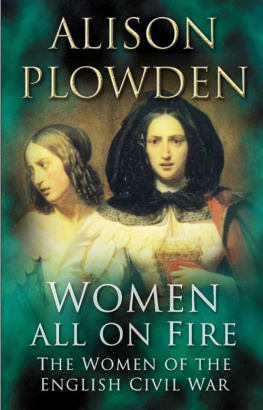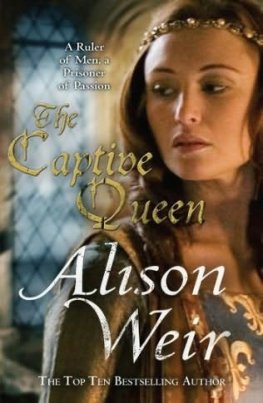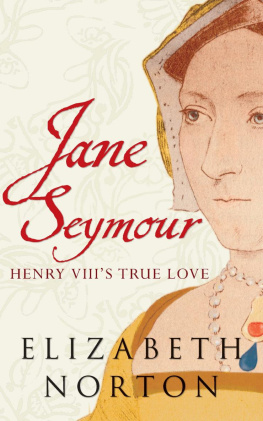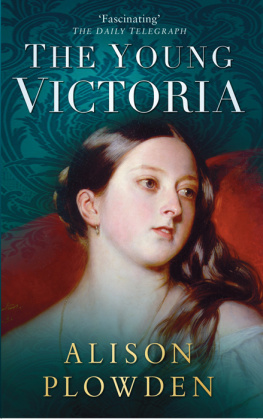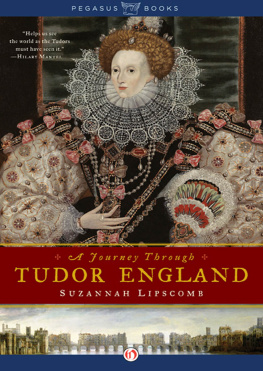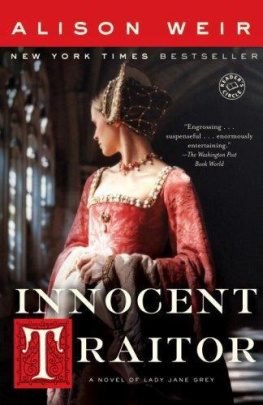C ONTENTS
| 1515 | Marriage of Charles Brandon, Duke of Suffolk with Mary Tudor, Queen of France |
| 1516 | Birth of Princess Mary |
| 1517 | Birth of Frances Brandon |
| 1519 | Birth of Eleanor Brandon |
| 1533 | Henry VIIIs divorce from Queen Catherine of Aragon |
| Marriage of Henry Grey, Marquess of Dorset with Frances Brandon |
| Coronation of Queen Anne Boleyn |
| Death of Mary Tudor, Queen of France |
| Birth of Princess Elizabeth |
| 1534 | First Act of Succession |
| Act of Supremacy |
| 1535 | Henry VIII assumes title of Supreme Head of the Church |
| 1536 | Execution of Queen Anne Boleyn |
| Henry VIII marries Jane Seymour |
| Second Act of Succession |
| 1537 | Birth of Lady Jane |
| Birth of Edward VI |
| Death of Queen Jane Seymour |
| 1539 | First English Bible introduced |
| Act of Six Articles |
| Birth of Katherine Grey |
| 1543 | Henry VIII marries Katherine Parr |
| 1544 | Third Act of Succession |
| 1545 | Birth of Mary Grey |
| 1547 | Death of Henry VIII |
| Marriage of Queen Katherine Parr with Thomas Seymour |
| 1548 | Death of Queen Katherine Parr |
| 1549 | Execution of Thomas Seymour |
| First English Book of Common Prayer introduced Coup dtat by John Dudley, Earl of Warwick (later Duke of Northumberland) |
| Fall of Protector Somerset |
| 1552 | Execution of the Duke of Somerset |
| Second Book of Common Prayer introduced |
| 1553 | Marriage of Lady Jane Grey with Guildford Dudley Edward VI makes a will disinheriting Mary and Elizabeth and appointing Jane Grey as his successor Death of Edward VI |
| Accession of Jane Grey |
| End of her Nine Days reign and accession of Mary Tudor |
| Execution of the Duke of Northumberland |
| 1554 | Wyatt Rebellion |
| Execution of Lady Jane Grey and Guildford Dudley |
| Execution of Henry Grey, Duke of Suffolk |
| 1558 | Death of Queen Mary Tudor and accession of Elizabeth |
| 1559 | Death of Frances Grey, Duchess of Suffolk |
| 1560 | Marriage of Katherine Grey with Edward Seymour, Earl of Hertford |
| 1565 | Marriage of Mary Grey with Thomas Keyes |
| 1568 | Death of Katherine Grey |
| 1578 | Death of Mary Grey |
Today I saw Lady Jane Grey walking in a grand procession to the Tower. She is now called Queen, but is not popular, for the hearts of the people are with Mary, the Spanish Queens daughter. This Jane is very short and thin, but prettily shaped and graceful. She has small features and a well-made nose, the mouth flexible and the lips red. The eyebrows are arched and darker than her hair, which is nearly red. Her eyes are sparkling and reddish brown in colour. I stood so near her grace that I noticed her colour was good but freckled. When she smiled she showed her teeth, which are white and sharp. In all a gracious and animated figure. She wore a dress of green velvet stamped with gold, with large sleeves. Her headdress was a white coif with many jewels. She walked under a canopy, her mother carrying her long train, and her husband Guildford walking by her, dressed all in white and gold, a very tall strong boy with light hair, who paid her much attention. The new Queen was mounted on very high chopines to make her look much taller, which were concealed by her robes, as she is very small and short. Many ladies followed, with noblemen, but this lady is very heretical and has never heard Mass, and some great people did not come into the procession for that reason.
Baptista Spinola, 10 July 1553
O NE
Eighth Henry ruling this land,
He had a sister fair
And being come to Englands Court,
She oft beheld a knight,
Charles Brandon namd, in whose fair eyes,
She chiefly took delight.
Song of an English Knight (The Suffolk Garland)
On a spring day in the year 1533 Henry Grey, marquess of Dorset, and the kings niece Lady Frances Brandon were married in the chapel at Suffolk Place, London, the home of the brides parents. There is no reason to suppose that any romance was involved. Marriages at this level were, with very rare exceptions, strictly business arrangements, planned with financial and/or dynastic advantage in mind. In this case, however, the existence of a long-standing bond of friendship and shared experience between the Brandons and the Greys makes it likely that the young people concerned Frances was not quite sixteen, Henry Grey about a year older would have had more opportunity than many such couples of getting to know one another before the knot was tied.
At first glance it might have seemed a somewhat unequal match for the bride, with her impressive royal connections, but the Greys their name is said to derive from the castle of Croy in Picardy were an ancient and well-respected Edward, eldest son by a second marriage of the third Lord Grey of Ruthyn, married the heiress to the barony of Ferrers of Groby in Leicestershire and it was their son, Sir John Grey of Groby, who, in the middle of the fifteenth century, took to wife Elizabeth, the daughter of Richard Woodville of Grafton near Stony Stratford. This marriage was more or less contemporaneous with the early stages of that long-drawn-out, murderous family quarrel between York and Lancaster, conveniently known as the Wars of the Roses, and John Grey was killed fighting on the Lancastrian side at the second battle of St Albans in 1461. Three years later his widow, a beautiful but designing lady, so captivated the impressionable Yorkist king, Edward IV, that he married her an unpopular misalliance widely held to have contributed to the eventual downfall of his house.
Elizabeth Woodville, as she is always better known, was notorious for the strength and tenacity of her family feelings, and she worked hard to promote the interests of her sons by her first marriage. Thomas, the elder, was created marquess of Dorset by his stepfather and looked to be all set for a secure and prosperous future. Then, suddenly, in April 1483 Edward IV was dead. By the end of the summer the throne had been seized by his brother Richard of Gloucester and his two young sons the little princes in the Tower had disappeared from public view. That autumn there was an unsuccessful counter-coup led by Henry Stafford, duke of Buckingham, and supported by, among others, the Woodvilles and the Greys. The attempt to unseat King Richard collapsed and Buckingham was executed, but Thomas Grey and his young son escaped to Brittany where Henry Tudor, earl of Richmond, the last surviving male representative of the house of Lancaster, had been living in precarious exile for the past twelve years. Also among the select band of political refugees now gathering across the Channel were the brothers William and Thomas Brandon from East Anglia.
Unlike the Greys, the Brandons could not claim ancient or noble lineage, their immediate forebears having been small merchant traders based around the Norfolk port of Lynn. They were, however, on their way up. Their father, having made a good marriage and been fortunate in his business ventures, had invested in landed property, acquired a knighthood and set himself up as a prominent and worshipful member of local society. The family had always been Yorkists loyal to Edward IV William and Thomas had both been members of his household but in 1483 they appear to have gambled on the overthrow of Richard Crookback and were consequently obliged to leave the country in a hurry.



